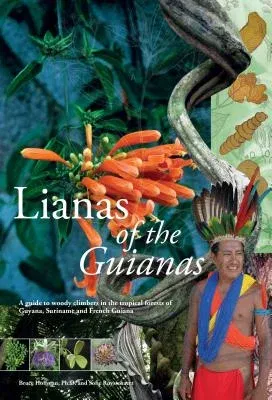Bruce Hoffman
(Author)Lianas of the Guianas: Guide to the Woody Climbers in the Tropical Forests of Guyana, Suriname and French GuianaHardcover, 3 November 2017

Qty
1
Turbo
Ships in 2 - 3 days
Only 1 left
Free Delivery
Cash on Delivery
15 Days
Free Returns
Secure Checkout

Print Length
624 pages
Language
English
Publisher
LM Publishers
Date Published
3 Nov 2017
ISBN-10
9460222242
ISBN-13
9789460222245
Description
Product Details
Authors:
Book Format:
Hardcover
Country of Origin:
US
Date Published:
3 November 2017
Dimensions:
25.4 x
17.53 x
3.81 cm
ISBN-10:
9460222242
ISBN-13:
9789460222245
Language:
English
Location:
Seattle
Pages:
624
Publisher:
Weight:
1950.45 gm